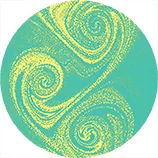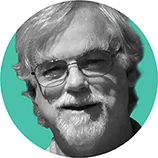Six years ago I met an incredible Alexander teacher who asked me what I thought an extremely personal question: "Do you consider yourself a sensual person?" It took a while to unpack that question, to realize that she was getting at "thinking vs sensing" moment to moment both in life and on stage. And that conversation opened up a whole new way of being in my body that changed me as a performer, and as a teacher of Pilates forever.
Some people in the world of acting and voice training have a very negative view of strength training and core training specifically. That is because so often fitness instructors encourage a kind of “brace here, hold here, now move” technique that makes their client very strong but also a little bound down and unable to breathe or speak freely. There is what we call in the Alexander world a lot of “end-gaining” in the name of fitness that lacks an element of awareness and taking care of the whole self.
The idea that one could be grounded, strong and available without holding tension is one that is not so understood by many people and not so easy to teach either.
After three years of graduate school as an actor and my early experience with teaching Pilates, I began to realize that actors needed a core, but they needed a free one and for that matter so did just about everyone I know. That quest for a mobile core, along with an injury to my ribs in a rehearsal room, led me to the brilliant Chloe Wing where I studied the Alexander technique, and also to the Kane School where I worked with a number of very smart movers and Pilates teachers.
As I write this, I am getting ready for a performance of a two person show that is a cabaret, theatrical event, and play all rolled into one. It's a show I started writing and working on while I was training with Chloe and I feel she is still with me, still guiding me as we remount it years later at the Gowanus Loft: "The Millay Sisters." Chloe passed away two years ago but I know she is still listening.
In this show, I play the poet Edna St. Vincent Millay, an extremely intelligent but also sensual writer, a Pulitzer Prize winner in the 1920’s. To have a sensual intelligence, to sense what the body is doing and to allow sound and expression to flow out through very precise poetic language and musical numbers is a challenge. It’s not so different though from the challenge of doing a knee fold without clenching the jaw or stiffening in the neck. It is about awareness: awareness of a habit, inhibiting that habit, and then directing into something that frees you. Make a choice to do something different, something that opens and radiates, rather than something that closes and drops away.
I would not be able to do the work in this show or to connect to the wholeness of teaching and training without this connection I found to the body via Alexander, and not only Alexander but the intersection of Alexander with the activity of Pilates. These two methods in some ways seem to be odds, but when given a chance to dialogue can bear fruit.
I spent this weekend teaching and taking sessions at a conference for actors and Alexander teachers from all over the country. The conference called “Freedom to Act” happens annually. I was given the opportunity to teach along with one of my colleagues from Magis Theatre Company, a training and actor-based company in New York City. We taught a class at the conference called “Awakening Your Text.” Its theme was balance: balance in movement, balance in the room, balance and core on a squishy ball, and balancing on your bones.” Oddly enough, finding balance is a very global way of freeing the body, voice and imagination. Here is what one of the young actors had to say at the end of the class: “I did this monologue from Walt Whitman in my Voice and Speech class and even then I got stuck doing the same thing but here it was just like there were words that popped up that I hadn't thought were as important as they were now, and then there were images that popped up in places and it freed me up in a completely different way than I had when I was at school. Even the squishy ball. I just loved the squishy ball! We talk a lot about freeing the body and opening ourselves up...and just rolling the pelvis around on the ball and doing the clock...that alone just freed me up. I have a lot of tension in my chest and even that is open and available."
I think that sums it up.
We all want to feel free, open and strong both as performers and people. Getting there is a creative process and different for all. For me, this combination of Alexander, Pilates and performance has helped me get a closer connection to the golden thread of radiant energy.






